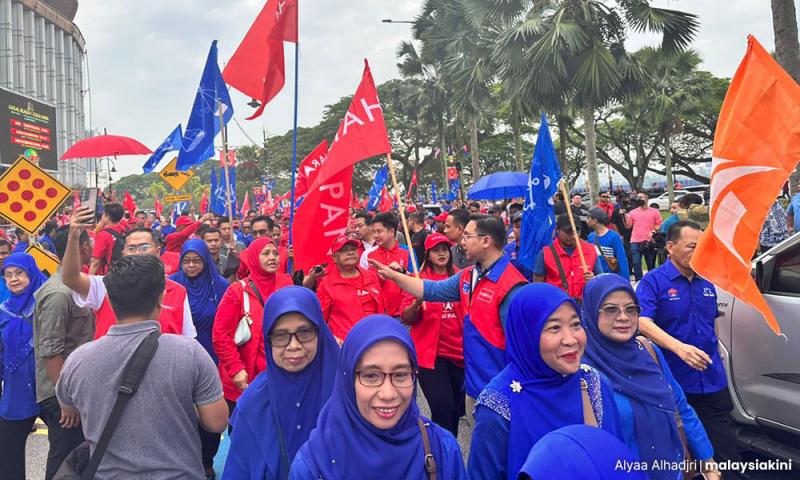
Changing tide? A look at Pulai and Simpang Jeram
Bridget Welsh
COMMENT | This weekend, voters go to the polls to select their representatives for the Pulai parliamentary seat and Simpang Jeram state seat in Johor.
The by-elections were called when the seats became vacant with the passing of Salahuddin Ayub, a minister known for his humility and hard work.
Fielding candidates close to Amanah’s former vice-president, the party has anchored their campaign around the late Salahuddin’s Payung Rahmah legacy initiative that aimed to provide nutritious affordable meals and prioritised the economic struggles Malaysians are facing.
In the course of the by-election campaign, Amanah’s messaging has been overshadowed by Perikatan Nasional’s persistent focus on identity politics, appealing to race and religion (including the use of fatwa), as well as the opposition’s strategic focus on aiming to deny the parliamentary two-thirds of the Anwar government.
In the last few days of the campaign, the executive’s dropping of serious corruption charges against ally and Umno president Ahmad Zahid Hamidi, the discharge not amounting to an acquittal (DNAA), has dominated discussion, with the opposition hoping that outrage from this decision will impact the results.
This piece looks at voting patterns in the two seats and explores the question of whether these contests could echo a similar defeat in Johor - the 2019 by-election loss in Tanjung Piai.
Johoreans at the time expressed their dissatisfaction with Pakatan Harapan, with a swing in support and drop in turnout among Chinese voters targeting their anger against former premier Dr Mahathir Mohamad’s leadership and management of the economy (for an analysis of this result see: The turning of the tide in Tanjung Piai). There was anger, particularly against DAP, in the handling of the local port.
The Tanjung Piai by-election was the poll that turned the political tide against the Harapan government in 2019. It remains to be seen if this happens again in Johor’s coming two contests.
Similar but different: A look at the seats
On the surface, both seats appear similar to each other. Both are ethnically mixed seats, with a large share of non-Malay voters, especially in Pulai.
The Indian vote in Pulai will be particularly important at a not insignificant 12 percent. Simpang Jeram has a different composition, with a majority of Malay voters at 55 percent, and fewer Indians at three percent.
COMMENT | This weekend, voters go to the polls to select their representatives for the Pulai parliamentary seat and Simpang Jeram state seat in Johor.
The by-elections were called when the seats became vacant with the passing of Salahuddin Ayub, a minister known for his humility and hard work.
Fielding candidates close to Amanah’s former vice-president, the party has anchored their campaign around the late Salahuddin’s Payung Rahmah legacy initiative that aimed to provide nutritious affordable meals and prioritised the economic struggles Malaysians are facing.
In the course of the by-election campaign, Amanah’s messaging has been overshadowed by Perikatan Nasional’s persistent focus on identity politics, appealing to race and religion (including the use of fatwa), as well as the opposition’s strategic focus on aiming to deny the parliamentary two-thirds of the Anwar government.
In the last few days of the campaign, the executive’s dropping of serious corruption charges against ally and Umno president Ahmad Zahid Hamidi, the discharge not amounting to an acquittal (DNAA), has dominated discussion, with the opposition hoping that outrage from this decision will impact the results.
This piece looks at voting patterns in the two seats and explores the question of whether these contests could echo a similar defeat in Johor - the 2019 by-election loss in Tanjung Piai.
Johoreans at the time expressed their dissatisfaction with Pakatan Harapan, with a swing in support and drop in turnout among Chinese voters targeting their anger against former premier Dr Mahathir Mohamad’s leadership and management of the economy (for an analysis of this result see: The turning of the tide in Tanjung Piai). There was anger, particularly against DAP, in the handling of the local port.
The Tanjung Piai by-election was the poll that turned the political tide against the Harapan government in 2019. It remains to be seen if this happens again in Johor’s coming two contests.
Similar but different: A look at the seats
On the surface, both seats appear similar to each other. Both are ethnically mixed seats, with a large share of non-Malay voters, especially in Pulai.
The Indian vote in Pulai will be particularly important at a not insignificant 12 percent. Simpang Jeram has a different composition, with a majority of Malay voters at 55 percent, and fewer Indians at three percent.
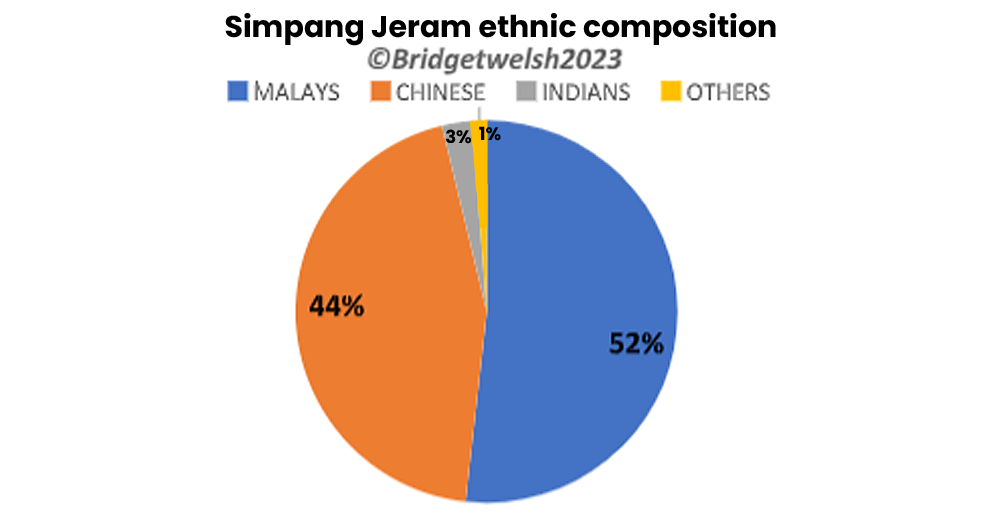
Yet there are important differences in these seats, beyond the composition. Pulai is in southern urban Johor, where the contest has been concentrated between Harapan and Umno.
Umno has lost this seat since 2018, with the party’s support eroding from 2013. The support of Umno traditional supporters will be crucial for any Harapan (or PN) victory.
Umno has lost this seat since 2018, with the party’s support eroding from 2013. The support of Umno traditional supporters will be crucial for any Harapan (or PN) victory.
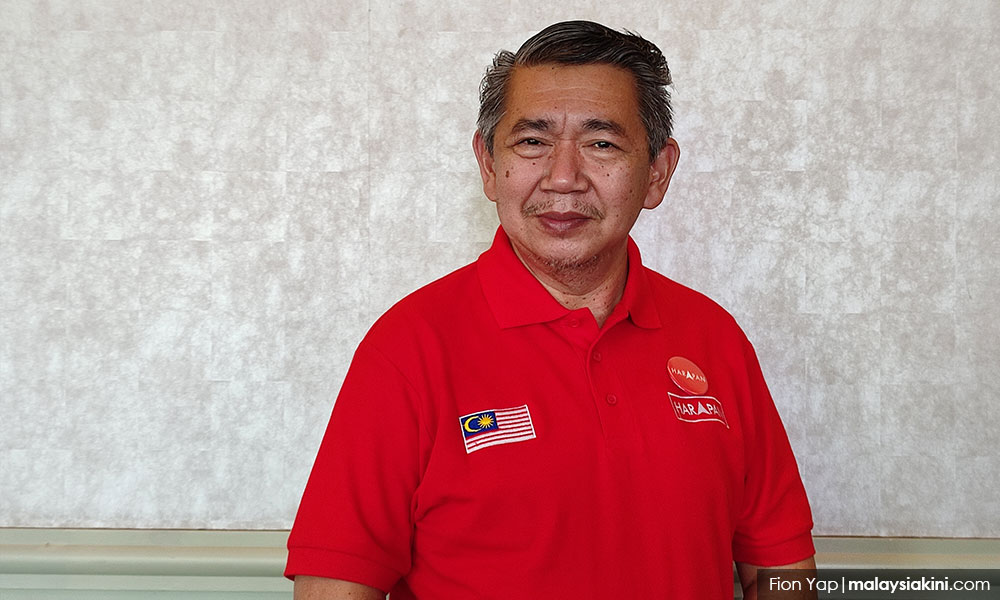
Pulai and Simpang Jeram incumbent Salahuddin Ayub who passed away on July 23
In contrast, Simpang Jeram is in northern Johor and is a constituency with more semi-urban areas. It was a tough fight in the 2022 Johor polls, with Salahuddin’s personal popularity crucial in securing victory for Amanah.
The seat is near the base of PN chairperson Muhyiddin Yassin in Pagoh and in a region of Johor where PN has been gaining significant ground over the last two elections, winning 30 percent of the vote in the 2022 Johor state polls.
By comparison in Pulai, PN only secured 18 percent of the vote in GE15. PN fielded a Chinese candidate then and in this coming election, they are fielding a Malay candidate, aiming to pull Malay votes. When PAS contested this seat in 2013, it won 48 percent of the vote.
Of the two contests, Simpang Jeram is the most competitive due to its composition and voting history, detailed below.
A look at factors shaping outcome: Ethnic voting patterns
The GE15 ethnic voting patterns in these contests reflect trends in the state and nationally. The Chinese support for Harapan is very high, at an estimated 95 percent in both seats.
Harapan is dependent on Chinese support to win these seats, a reason a possible Chinese swing over the Zahid DNAA may be decisive.
Harapan’s Indian support in Pulai was also high in GE15, at an estimated 95 percent, but lower in Simpang Jeram where BN retained an estimated third of the vote at 34 percent. Support from the Indian vote will shape both contests.
The 2023 state polls decline in support for Harapan among Indians, especially Tamils, was an issue that has provoked public discussion. As yet, there have been no meaningful policy responses from the Anwar government.
In contrast, Simpang Jeram is in northern Johor and is a constituency with more semi-urban areas. It was a tough fight in the 2022 Johor polls, with Salahuddin’s personal popularity crucial in securing victory for Amanah.
The seat is near the base of PN chairperson Muhyiddin Yassin in Pagoh and in a region of Johor where PN has been gaining significant ground over the last two elections, winning 30 percent of the vote in the 2022 Johor state polls.
By comparison in Pulai, PN only secured 18 percent of the vote in GE15. PN fielded a Chinese candidate then and in this coming election, they are fielding a Malay candidate, aiming to pull Malay votes. When PAS contested this seat in 2013, it won 48 percent of the vote.
Of the two contests, Simpang Jeram is the most competitive due to its composition and voting history, detailed below.
A look at factors shaping outcome: Ethnic voting patterns
The GE15 ethnic voting patterns in these contests reflect trends in the state and nationally. The Chinese support for Harapan is very high, at an estimated 95 percent in both seats.
Harapan is dependent on Chinese support to win these seats, a reason a possible Chinese swing over the Zahid DNAA may be decisive.
Harapan’s Indian support in Pulai was also high in GE15, at an estimated 95 percent, but lower in Simpang Jeram where BN retained an estimated third of the vote at 34 percent. Support from the Indian vote will shape both contests.
The 2023 state polls decline in support for Harapan among Indians, especially Tamils, was an issue that has provoked public discussion. As yet, there have been no meaningful policy responses from the Anwar government.
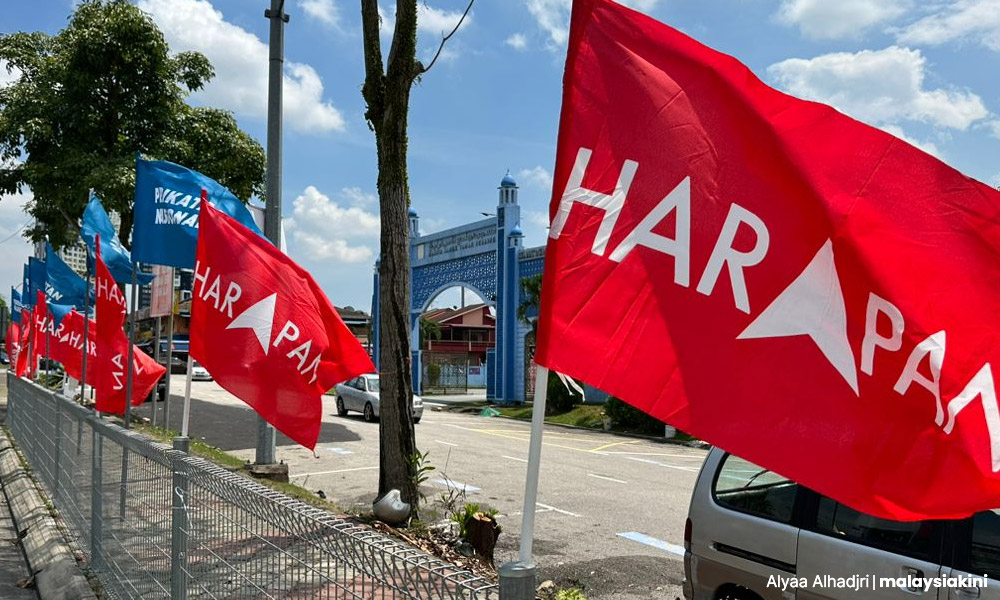
On its part, PN won over no support from non-Malays in the previous elections in these seats, and will face a continued struggle to win support from these communities.
Resistance to PAS in particular among non-Malays remains strong. Even when PAS was part of Pakatan Rakyat in 2013, the Islamist party was not able to win Pulai.
While Bersatu is contesting there and PAS is contesting in the more competitive Simpang Jeram, hoping to add another seat to the one it has in the state in neighbouring Maharani in Muar, they face an uphill battle winning over non-Malays, in part due to their racialised campaigning.

The focus thus is on the more competitive Malay vote. Following national polarised patterns, Harapan only secured a small share of the Malay vote, an estimated 14 percent in Pulai and 11 percent in Simpang Jeram in GE15.
Umno is important in both seats, winning half of the Malay vote in Pulai and a third in Simpang Jeram. Malay support for Umno had been declining precipitously since 2013, but GE15 only witnessed a comparatively moderate swing towards PN compared to other parts of the country. PN’s fielding of a Malay candidate in Pulai, appealing to race directly, hopes to add to their support levels.
A major issue in both contests will be potential crossover support from Umno to Harapan. Umno has been campaigning for Harapan, but it remains to be seen whether the support will move over.
The recent state elections suggest that on average, less than half of BN support moved over to Harapan. This makes both elections more competitive than is being suggested from previous voting patterns.
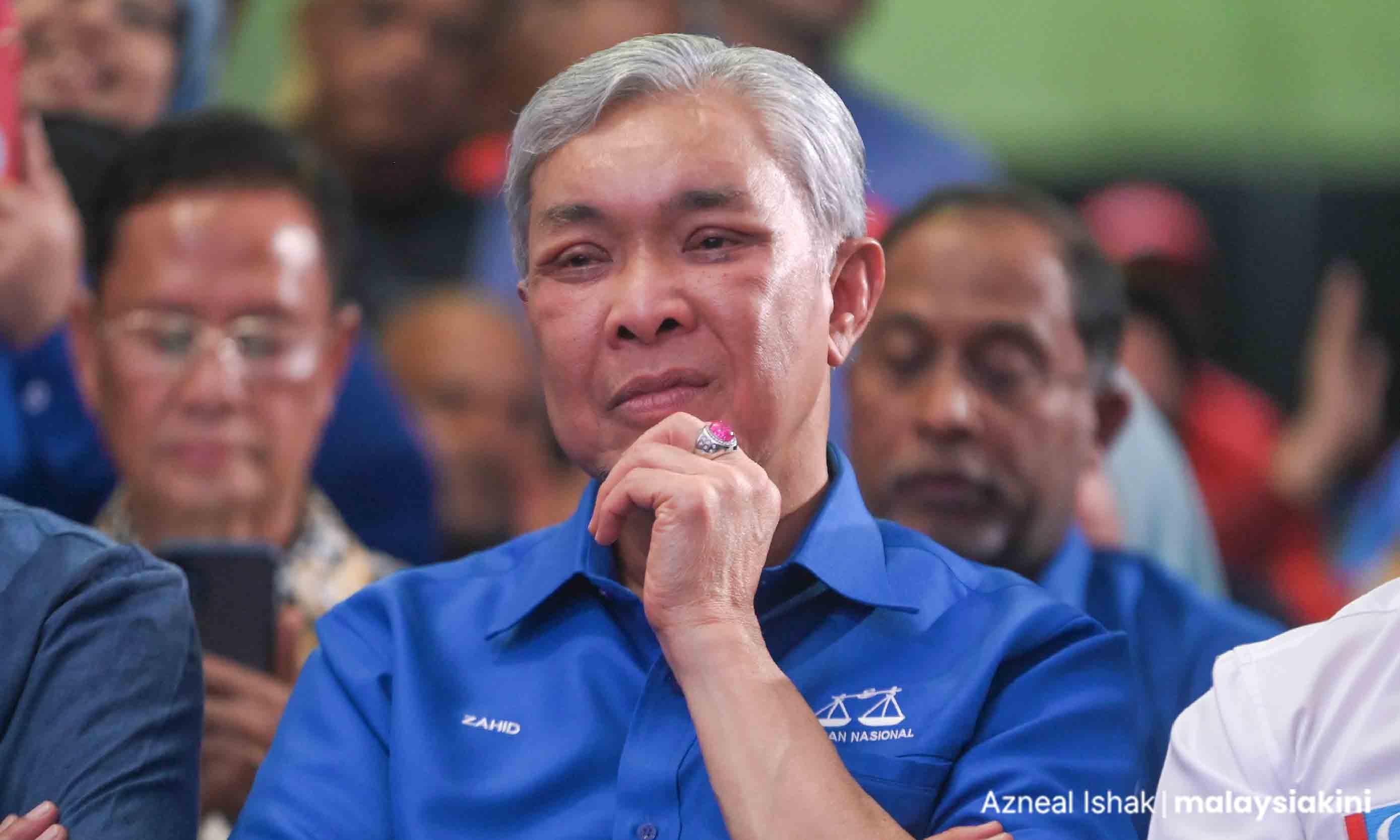
Umno president Ahmad Zahid Hamidi
It will be interesting to see how Umno voters react to the Zahid decision. Zahid is not as popular a leader in Johor compared to other Umno leaders, yet the decision is being framed as a victory for the party.
Important youth vote
Another important lens to understand voting is to look at the youth vote in GE15. Voters under 30 comprise 31 percent in Pulai and 32 percent in Simpang Jeram, almost a third.
While Salahuddin was more popular among younger voters compared to other Harapan leaders, the results challenge the persistent misinformed view that young people voted overwhelmingly for PN.
Those of us who actually analyse the results appreciate the importance of varied patterns in youth voting by states and seats.
In GE15, Harapan won an estimated 56 percent of voters under 30 in Pulai and an estimated 46 percent in Simpang Jeram. The support of this group will be decisive in any victory. Here too, however, there have been few meaningful initiatives geared to winning over younger voters on the part of the Anwar government.
Amanah is hoping that youth support will transfer to their candidates, both closely associated with Salahuddin and are known as sincere and hardworking. The candidates represent a generation shift taking place in Amanah.
It will be interesting to see how Umno voters react to the Zahid decision. Zahid is not as popular a leader in Johor compared to other Umno leaders, yet the decision is being framed as a victory for the party.
Important youth vote
Another important lens to understand voting is to look at the youth vote in GE15. Voters under 30 comprise 31 percent in Pulai and 32 percent in Simpang Jeram, almost a third.
While Salahuddin was more popular among younger voters compared to other Harapan leaders, the results challenge the persistent misinformed view that young people voted overwhelmingly for PN.
Those of us who actually analyse the results appreciate the importance of varied patterns in youth voting by states and seats.
In GE15, Harapan won an estimated 56 percent of voters under 30 in Pulai and an estimated 46 percent in Simpang Jeram. The support of this group will be decisive in any victory. Here too, however, there have been few meaningful initiatives geared to winning over younger voters on the part of the Anwar government.
Amanah is hoping that youth support will transfer to their candidates, both closely associated with Salahuddin and are known as sincere and hardworking. The candidates represent a generation shift taking place in Amanah.

PN won only an estimated 22 percent support of the youth vote, the same as BN in Pulai. In Simpang Jeram, PN did a bit better at an estimated 33 percent, with BN losing ground winning only 18 percent.
The age cohort findings suggest two other important features of voting. Umno’s support is concentrated among older voters. The ability of local Umno leaders to convince older Umno voters to crossover will be decisive.
PN’s support is heavily concentrated among younger voters, which is a group that will be highly competitive in these polls.
Turnout test
The level of competition will arguably be shaped by one vital factor - turnout.
From an ethnic lens, turnout among Malays is the highest, declining in GE15. The groups from an ethnic perceptive to watch for turnout are Chinese and Indian voters. Rather than vote for PN, they may choose not to vote.
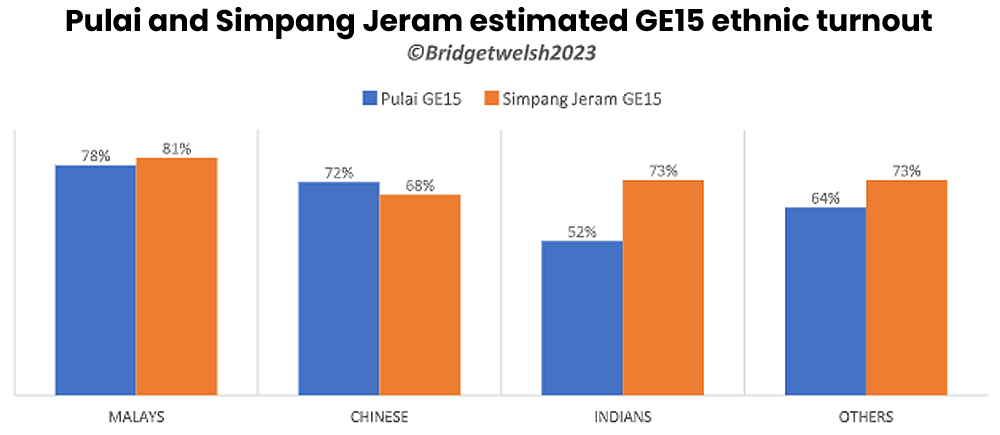
Another group to watch are younger voters. Here too, there is a myth that younger voters do not turn out to vote. This is not the case.
GE15 voter turnout was higher among youth in Simpang Jeram than in Pulai, suggesting that Undi18 voters in particular are highly enthusiastic to vote. This enthusiasm declined in the 2023 state polls, in part due to a lack of respect for youth (and attacks on youth political engagement/parties).
Whether youth will come back from Singapore to vote this election will be crucial. There are no special lanes in immigration, perhaps in part as they may not be needed.

From an age perspective, the group with the lowest turnout is older voters over 60, an estimated 63 percent in Pulai and an estimated 73 percent in Simpang Jeram. This highlights less enthusiasm for voting among older Malaysians.
For Harapan, if voting levels among other age cohorts drop to below 60 percent, especially among their traditional supporters, the seats will be lost.
Shifts in electoral fortunes?
The Pulai and Simpang Jeram campaigns have been relatively low-key, but they will impact the future of Harapan. Turnout, along with ethnic voting dynamics, crossover and youth support will determine the outcome from the lens of voting behaviour.
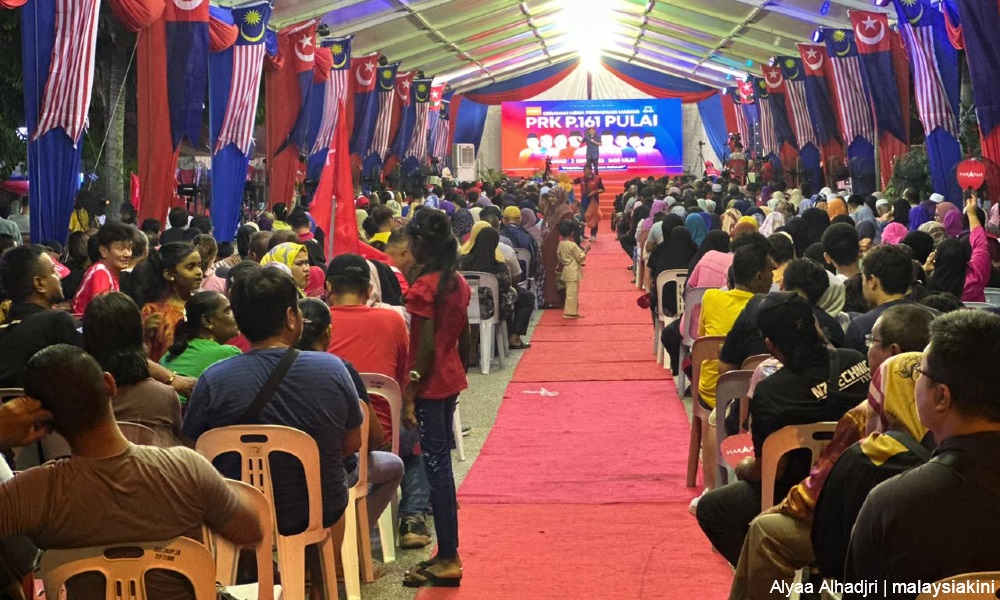
Looking at the political narrative, the campaign has moved from one about Salahuddin’s legacy to the Zahid DNAA, a sad turn of affairs dishonouring the memory of a political statesman. Voters will face the difficult decision of whether to honour the past or look at the dishonour of the present.
Both of these seats should have been sure wins. PN is hoping to secure victory in Umno’s home ground of Johor and to strike a blow to Anwar’s government. They still face tough fights.
With good reasons given Salahuddin’s popularity, Harapan has been confident. There is a good chance the seats will be retained, especially Pulai. Turnout levels have to drop by 20 percent and voting patterns have to shift considerably, with over 10 percent swings.
Yet, as the campaign moves to be about Anwar’s government, another referendum on the federal government, the question is whether Harapan are over-confident as they were in the state polls.
This sort of turnout drops and voting shifts have happened before. Harapan is resting its hope on voters opting for stability, staying with the Anwar government, rather than empowering forces of instability, which a victory for PN could do.
Losing either of the seats previously held by one of the most popular ministers in the unity government after the rebuke in the state polls would be a serious loss, not to mention a disservice to his memory. As in Tanjung Piai, it could change the political tide.
BRIDGET WELSH is an honourary research associate of the University of Nottingham’s Asia Research Institute, a senior research associate at Hu Fu Center for East Asia Democratic Studies, and a senior associate fellow at The Habibie Centre. Her writings can be found at bridgetwelsh.com

PH deserves to be defeated in both the seats.
ReplyDeleteAnwar's Madani Government has and is straying far away from PH's base. The latest DNAA reward to Zahid is another nail in the coffin .
Wakakakaka…
DeleteWhat would u get with the fall of the mandani govt?
Self serving dickhead, do staying within yr fart filled chamber, reading yr f*cked demoNcrstic propagandas!
I think the writer is misconstrued when she said that the political tide can change by PN winning this 1 seat! Dont forget you cannot leap frog any longer to cause a government to collapse. Furthermore GRS and GPS are solidly behind PH. Dont expect another Sheraton PJ here!
ReplyDelete